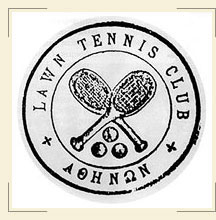|
The geography of Greek sport
The creation of the first Greek sports associations corresponded to the dynamic spread of sport, especially in Europe and North America, during the  second half of the 19th century. In this context took place the primary processes for the formation of the Greek sports institutions in cities such as Athens, Alexandria, Constantinople, Smyrna, Limassol, Patras and Corfu. These cities could be regarded as the birthplaces of Greek sport and constituted a sui generis sports geography, which was not defined by the then boundaries of the Greek State. So, in 1873 Milo was founded in Alexandria and in 1877 Hermes in Constantinople. 1882 saw the foundation of the Athenian Gymnastic Association, which was, as it seems, the first association that developed sports activity in the capital of the Greek State. Lastly, the Sports Association of Athens was created in 1885. These associations dealt exclusively with the furtherance of gymnastic contests while their activity was very limited. second half of the 19th century. In this context took place the primary processes for the formation of the Greek sports institutions in cities such as Athens, Alexandria, Constantinople, Smyrna, Limassol, Patras and Corfu. These cities could be regarded as the birthplaces of Greek sport and constituted a sui generis sports geography, which was not defined by the then boundaries of the Greek State. So, in 1873 Milo was founded in Alexandria and in 1877 Hermes in Constantinople. 1882 saw the foundation of the Athenian Gymnastic Association, which was, as it seems, the first association that developed sports activity in the capital of the Greek State. Lastly, the Sports Association of Athens was created in 1885. These associations dealt exclusively with the furtherance of gymnastic contests while their activity was very limited.
In the early 1890s sports associations made their appearance, which developed, apart from gymnastics, athletics as well. In 1890 Orpheus was founded in Smyrna and the Panhellenic Gymnastic Society in Athens, in 1891 PanachaĽkos in Patras, in 1892 Olympia in Limassol, in 1893 Kerkyraikos, Apollo of Smyrna and the Ethnikos G.A. in Athens, while in 1894 was founded the Gymnasium of Smyrna, the Association of Piraeus and the Gymnastic Society of Patras. At the same time other sports made their appearance, such as rowing (1885, Rowing Club of Faliron), tennis (1895, Lawn Tennis Club) and cricket (1893, Kerkyraikos).
The assignment of the first modern Olympic Games accelerated even more the processes of formation of the Greek sports institutions and multiplied the sports associations. It is not a coincidence that of the almost 50 sports associations that seemed to operate in late 1896 (Spyridon Lampros addressed to 52 associations when he took the initiative for the creation of SEAGS), 30 were founded the year of the Olympic Games. A few months later, in January 1897, 28 associations were the founding members of the SEAGS. Among them, 5 were from Athens and Piraeus, 20 from the province of the Greek State, and 3 more were active outside the Greek boundaries: in Asia Minor (Smyrna) and in Cyprus (Nicosia, Limassol).
During the following years sports associations were created in all the more cities outside the Greek State and sports activity developed. In 1910 from the 44 associations that constituted the SEAGS 20 were active outside the Greek State, in cities with substantial Greek populations living in the Ottoman Empire (e.g. Thessaloniki, Constantinople, Smyrna), in Egypt (Alexandria, Cairo), in Cyprus and elsewhere. The most active of those associations organized their own sports games. The Panionian Games in Smyrna, the Pangkypria in Cyprus and the Panhellenic games organized by the Sports fans Club of Alexandria were together with the Panhellenic Games the most important games in Greek sport. These games were an opportunity for the Greek associations everywhere to meet and often gave rise to events of irredentist character.
The radical change of the boundaries in the period 1912-1922 and the incorporation into the Greek State of the overwhelming majority of the Greeks, who lived in the Balkans and in the East Mediterranean, through the expansion of the boundaries and due to the exchange of populations, affected sweepingly the geography of Greek sport. In the next decades the gradual shrinking of the Greeks in Alexandria, Cairo and Constantinople would annihilate the activity of the Greek sports associations in these cities, making Athens the chief centre for the development of Greek sport. The coincidence of the boundaries of Greek sport and those of the Greek State would be achieved in the 1980s, almost a century after the foundation of the first Greek sports associations, with the creation of an independent sports federation in Cyprus.
|